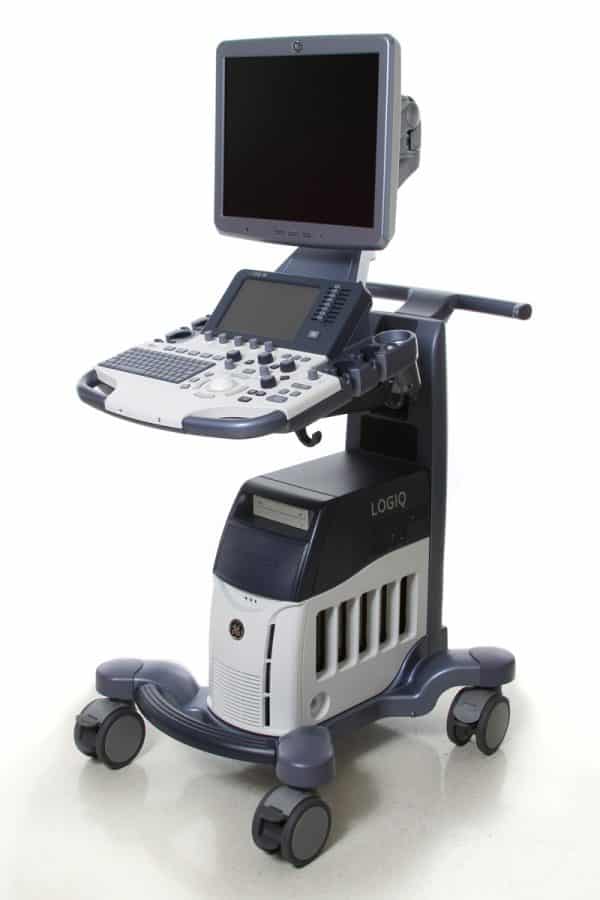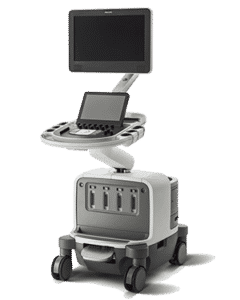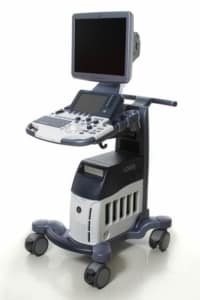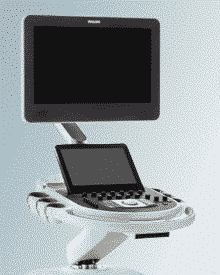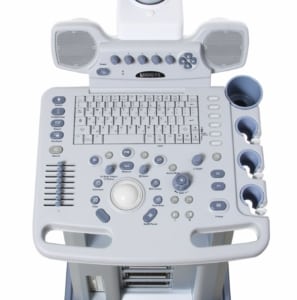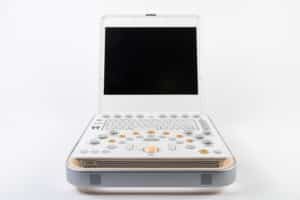The Best Shared Service Ultrasound Machines
Shared service is not an application but the recognition that multiple applications will often be needed in the same ultrasound machine. If you work at a multi-specialty clinic, in a hospital, or an imaging center, chances are that several physicians each with different specialties are going to need diagnostic ultrasound scans. Rather than purchasing a specialized ultrasound machine for each, it is much more convenient and cost-effective to purchase a shared service ultrasound that can do it all.
View any of the categories below to see the top 2-4 recommended shared service ultrasound machines in that category. All machines in a category will have similar minimum features. The price range in a category will generally but not always be similar. The price fluctuates on the brand recognition of an ultrasound machine (well-known brands carry a higher price) as well as the condition of the system. (Brand new machines have higher prices than refurbished or used shared service ultrasound machines.)
Often the best value in a category will be a refurbished ultrasound system from a well-known brand. The feature set is the same as other competing machines in the segment but the price is much lower. If you know what segment you’re looking for choose one below and click to see what shared service ultrasound machines are recommended in that feature range:
Categories of Shared Service Ultrasound Machines
Premium: The most advanced, top-of-the-line systems, but also the most expensive.
High-end: Most, but not all of the features of the premium segment at a lower cost.
Midrange: The most commonly purchased systems with some premium features.
Economy: Basic systems with less advanced technology but at the lowest price.
Portable: Range from High-end to Economy, but less expensive than consoles.
The Best Premium Shared Service Ultrasound Machines:
Recommended systems: Philips Epiq 7 & Epiq 5, GE Logiq E9, Philips iU22
Premium shared service ultrasound machines are meant to showcase the latest technologies and provide the absolute best image quality for even difficult patients in every possible application. Medical professionals who require the very best image quality and features across all applications where the price is not an obstacle will want to choose an ultrasound machine in this segment.
Philips has long held an advantage in shared service with the Philips iU22 holding the top spot for cardiac-focused shared service ultrasounds. The iU22 has been upgraded and refined for nearly a decade. However, the GE Logiq E9 has now nearly matched the iU22 in cardiac performance and was always superior in 4D OB/GYN applications. In late 2013 Philips released its new Epiq 7 and is now phasing out the iU22 in favor of the Epiq 7 and 5. In the past, the iE33 and iU22 were differentiated by the iE33’s stronger cardiac focus. The Epiq line meanwhile does not have this distinction between the Epiq 7 and 5. The Epiq 7 is the more powerful unit, but the Epiq 5 is only missing a few probes and features from the 7. Both the Epiq ultrasounds are next-generation machines that are smaller, lighter, faster, and have bigger screens and touchscreens than the previous generation.
Probo Medical recommends the Philips Epiq 7, GE Logiq E9, Philips iU22, and Philips Epiq 5 as the best-shared service ultrasound machines in the premium segment. Even though the iU22 is surpassed by the new Epiq 7 and 5, the difference is great that the iU22 has no more value. On the contrary, the iU22 is being sought in record numbers because the price is becoming more affordable. Perhaps the best price to power ratio however goes to the GE Logiq E9 which matches the iU22 in cardiac performance while offering superior 4D for OB/GYN applications. If you want the latest technology, small size and are less focused on 4D then the Epiq 7 and Epiq 5 make the most sense.
What to expect from a premium shared service ultrasound machine:
- The best image quality
- Large ultra high-quality LCD monitor and tablet-like touch panel
- The most advanced technology providing superfast processing speeds
- Technologies like 4D strain, 4D TEE for advanced interventional procedures
- A 2D Matrix transducer providing a sectional view and 4D echo
- All cardiac disciplines supported: LVO, 2D & 4D strain, and pediatric
- Repeatable, automatic LV function data with efficient 4D workflow
- Powerful automatic image optimization and auto measurement
- Semi or Automatic Quantification tools
- Full cardiac measurement package and flexible reporting format
